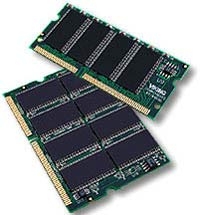 Whenever a laptop shows signs of illness, like running a fever or having deeper issues, its screen often displays a “sad” face with unusual symptoms. Let’s take a moment to diagnose the screen and check the overall health of your laptop to understand what might be troubling it, allowing for appropriate settings and care.
Whenever a laptop shows signs of illness, like running a fever or having deeper issues, its screen often displays a “sad” face with unusual symptoms. Let’s take a moment to diagnose the screen and check the overall health of your laptop to understand what might be troubling it, allowing for appropriate settings and care.
RAM Issues
Instead of the usual friendly interface, you might encounter a blue screen of death accompanied by a message filled with numbers. This is usually nothing to panic about. Make sure to write down the entire error code, such as 0x0000… (….,…..,…..), so you can look it up online to identify the issue. Typically, this error is hardware-related and can often be resolved with a simple reinstallation.
In another scenario, the screen may also turn blue, but this time the message indicates a RAM dump after the machine has been running for a while. This is often accompanied by the machine restarting itself.
The error message will clearly indicate that the issue is related to RAM. To accurately assess the severity of the RAM issue, you can try reinstalling Windows. If that doesn’t work, there’s a 99% chance the problem lies with the RAM. Alternatively, you can borrow a RAM module with the same specifications for stability testing. If you want to avoid prematurely discarding the RAM, you might also consider cleaning it.
RAM issues can also arise from dust accumulation on the connectors or loose contact points, which disrupts the motherboard’s system. If your laptop has one RAM stick, open the RAM compartment, remove the RAM, gently clean the connectors, then reinsert it and check again. If you have two RAM sticks, do the same while ensuring you reinstall the first RAM stick after removing the second.
Additionally, if your laptop has a powerful configuration, installing Memtest software can be essential for regularly “measuring the health” of the RAM. Of course, if all these efforts don’t resolve the issue, you will need to replace the RAM.
Installation Mistakes
About 30 minutes into using the laptop, you might notice that while watching a movie, the visuals appear distorted and colors seem off. Restarting the machine might temporarily fix the issue, but the laptop occasionally exhibits this “crying” behavior. This could be caused by several factors.
Screen distortion often happens after a reinstall, particularly if the Windows application installed is not compatible. For instance, if you’re using Windows XP Home but inadvertently install XP Pro SP2. If you use the original Windows version to update drivers during installation, there shouldn’t be any issues. Conversely, using a version lower than the original for updates will cause immediate screen reactions, even though all other functions operate normally. To resolve this issue, press ALT+F4 to close all programs and reset the machine.
Incompatible Resolution
One common issue with laptops is that text in Windows appears smudged, resembling spilled ink, and some letters might appear jagged. Each LCD laptop screen requires a specific resolution to optimally display the size and color of the data. Incorrect resolution settings will lead to distorted information display. Therefore, first, check the screen resolution.
If you’re not technically inclined, visit reputable service centers to have the settings adjusted accurately. If the adjustments still don’t fix the problem, check the fonts and find a solution. This issue can also be resolved by reinstalling new fonts. Additionally, pay attention to the graphics card driver, as an incompatible driver can cause similar text issues. Select the correct driver from the manufacturer for an update.
Cable or Card Damage
Another reason that can cause distorted application data on the screen is a loose or damaged cable connection to the motherboard, or a faulty graphics card chipset. Common symptoms include bright colors, smudged text, and images turning red or, worse, completely losing color. Try connecting to an external monitor; if the issue persists, it may indicate a problem with the graphics card chipset (which often fails to display colors and images).
The simple diagnoses and solutions provided here aim to help you understand the underlying causes of common laptop issues. This way, you can respond promptly, manage your device properly, and avoid unnecessary complications from technicians. Additionally, there are numerous other reasons stemming from user-installed default settings that may have been overlooked, leading to perceived device problems.
For instance, issues may arise from power settings where one selects between using AC power or battery, sleep mode, or standby. Sometimes, you might choose one option but configure the laptop to perform another. Choosing AC power while turning off the backlight may confuse the system when charging and activating simultaneously, resulting in the screen shutting off unexpectedly.
If you have addressed all these steps and still encounter issues, you should take your laptop to a professional repair and service center. Here, you will receive advice and installation of suitable utility software and drivers according to your laptop’s configuration and specific work needs. Some errors arise from incomplete driver installations (a fully equipped driver setup ensures more stable laptop operation).
Quick tip: Recently, many customers have questioned why their laptop runs slowly on battery power but significantly faster on AC power. By default, laptops reduce speed when running on battery to conserve energy, which can cause slower performance. If this is inconvenient, you can disable this feature in the BIOS or the Power Management program in Windows.
Moreover, using AC power for an extended period and rarely using the battery means that when switching to battery power, the machine will take longer to operate as it needs time to recalibrate.
Vi ái Dân





















































